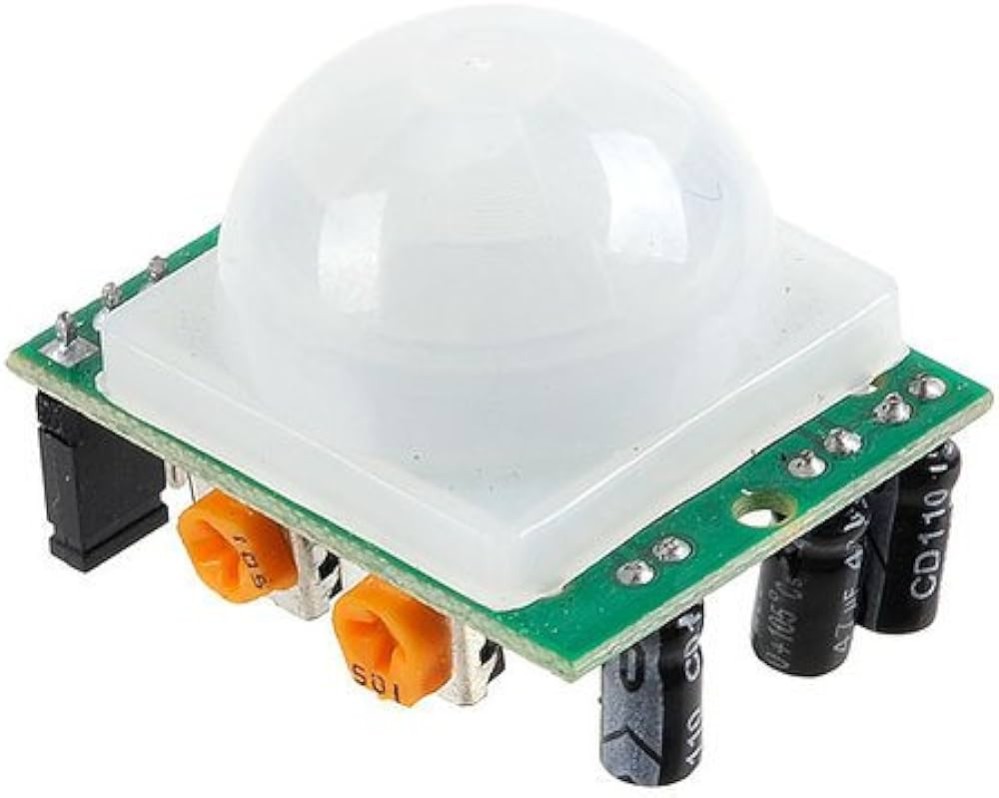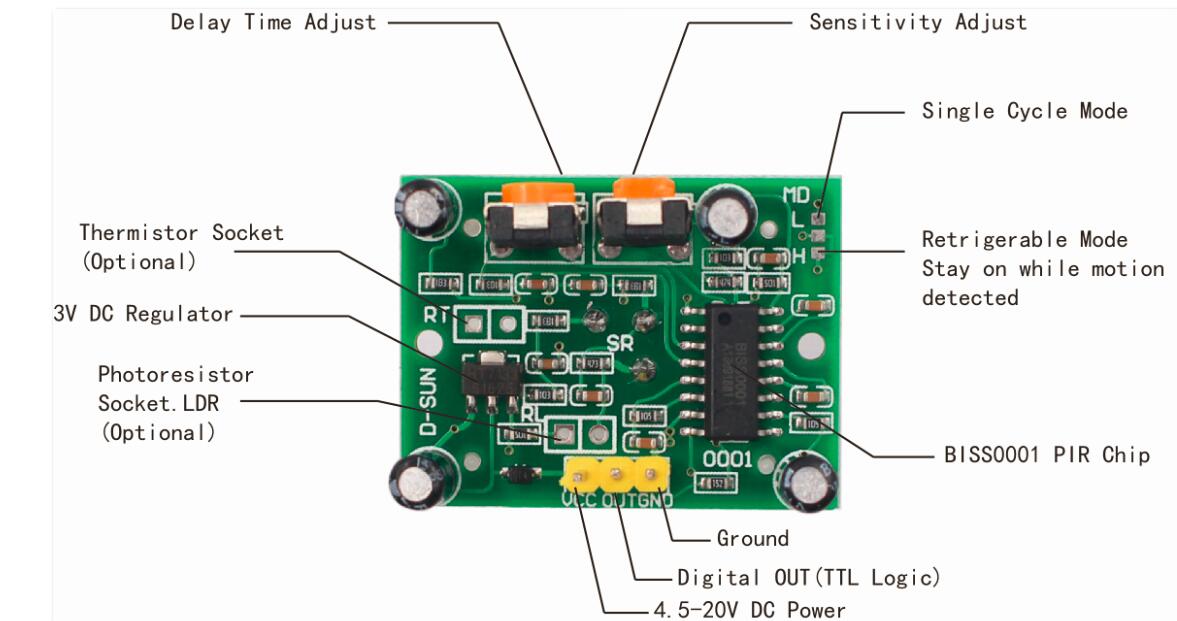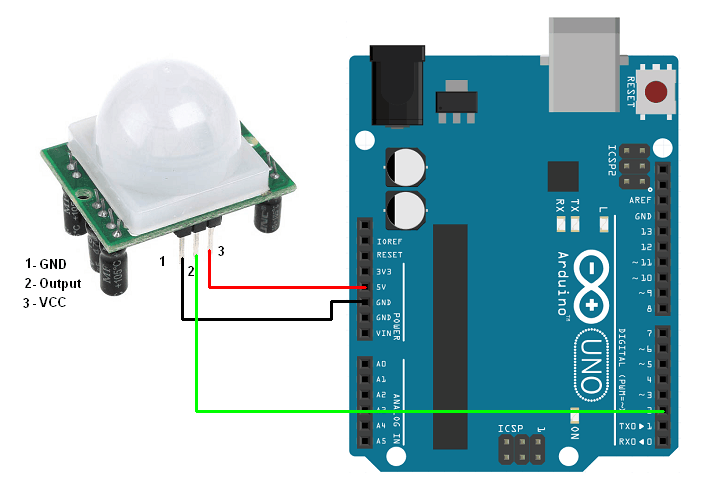








PIR Motion Detection Sensor Module
In the case of PIR sensors in burglar alarms, a relay comprises part of a circuit that runs across twin contacts. When the PIR sensor detects motion, it opens the relay, breaking the circuit and triggering the alarm.
₹ 64 ₹99
99



| Made In : | India |
Add FAQ
A PIR (Passive Infrared) Sensor is a type of motion detector that senses infrared (IR) radiation emitted by objects. It is commonly used for detecting motion in various applications, including security systems, automated lighting, and occupancy sensing. Here’s a detailed description of how a PIR sensor works and its typical applications:
Key Features:
-
Detection Principle:
- Passive Infrared Detection: The PIR sensor detects changes in infrared radiation within its field of view. All objects emit infrared radiation, and the sensor detects variations in this radiation to identify movement.
-
Detection Range:
- Distance: Typical detection ranges vary from a few meters up to 20 meters, depending on the sensor model and its configuration.
- Field of View: PIR sensors usually have a wide detection angle, often ranging from 60° to 120°, providing a broad area of coverage.
-
Output Type:
- Digital Output: PIR sensors usually provide a binary output (HIGH or LOW) based on motion detection. Some advanced models may offer analog output or serial communication.
-
Power Supply:
- Operating Voltage: Most PIR sensors operate on a low voltage, typically 3.3V to 5V, making them compatible with microcontrollers like Arduino.
-
Sensitivity and Range:
- Adjustable Sensitivity: Many PIR sensors have adjustable sensitivity and range settings, allowing users to customize the detection parameters.
- Temperature Compensation: The sensor is designed to be less sensitive to temperature variations, focusing on detecting motion rather than static changes in temperature.
-
Components:
- Pyroelectric Sensor: Detects infrared radiation changes. This component is sensitive to the thermal energy emitted by objects.
- Lenses: Often equipped with a Fresnel lens that focuses infrared light onto the pyroelectric sensor, enhancing its ability to detect movement over a wide area.
- Signal Processing Circuitry: Processes the raw infrared data and generates a digital output signal indicating motion detection.
Applications:
- Security Systems: Used in burglar alarms and surveillance systems to detect unauthorized movement and trigger alerts.
- Automated Lighting: Controls lighting systems by turning lights on or off based on detected motion, improving energy efficiency.
- Occupancy Sensing: Detects the presence of people in a room to manage heating, cooling, or other systems more efficiently.
- Home Automation: Integrates with smart home systems to automate various functions based on motion detection.
Example Connection with Arduino:
To connect and use a PIR sensor with an Arduino, follow these steps:
Wiring Instructions:
- PIR Sensor to Arduino:
- VCC (PIR Sensor) to 5V (Arduino) (or 3.3V depending on the sensor specifications).
- GND (PIR Sensor) to GND (Arduino).
- OUT (PIR Sensor) to a digital input pin on the Arduino (e.g., D2).


0 Reviews For this Product












.jpg&width=225&quality=80)
